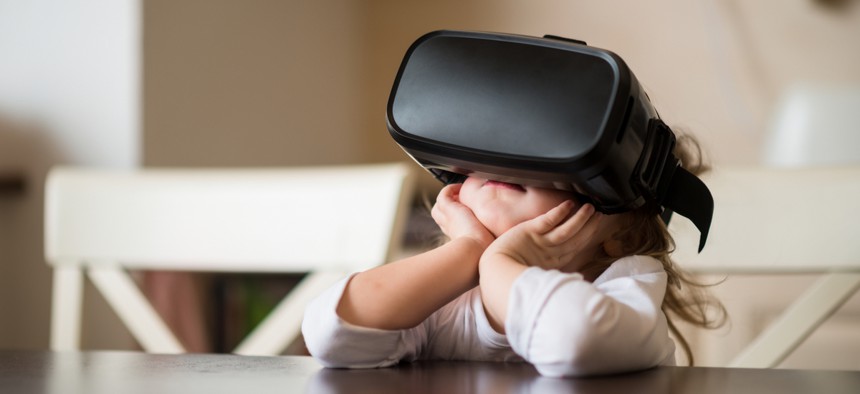Can Virtual Reality Be Used to Simulate and Treat Depression?

Martin Novak/Shutterstock.com
The National Institutes of Health are looking for small businesses to furnish the virtual reality technology.
Virtual reality headsets could help researchers better understand depression, according to the Health and Human Services Department.
The National Institutes of Health is looking for small businesses selling virtual reality technology that can simulate certain factors contributing to depression, as well as potential countermeasures. NIH's National Institute on Drug Abuse is also looking for a broader strategy for using immersive virtual environments to understand depression, according to a solicitation.
“Progress in depression research is dependent on experimental studies that can realistically emulate real-life stressors that people with depression experience," and virtual reality might be one way to do that—especially because it's youth-friendly, and allows researchers to repeat and control artificial environments, the solicitation says.
» Get the best federal technology news and ideas delivered right to your inbox. Sign up here.
Specifically, NIH wants to work with a company specializing in virtual reality to "generate environments in which to study stressors in the laboratory emulating real life.”
An adequate system would need to let the wearer "run, jump, crouch," and otherwise physically interact in 360 degrees in an immersive virtual reality environment. It shouldn't be location specific, so the wearer can enter the virtual environment from wherever they are and without needing special equipment other than a headset.
The federal government has been investigating virtual reality's potential to treat mental conditions for years. Medical researchers at the Veterans Affairs Department have used virtual reality to help veterans with post-traumatic stress disorder by gradually exposing patients to potential trigger events under controlled circumstances. Researchers in Miami, for instance, have experimented with adjusting sounds, smells, and images to simulate a traumatic experience while connecting the wearer to a headset and simulated combat vehicle, according to a VA blog post.
NEXT STORY: Constant Anxiety Won't Save the World


